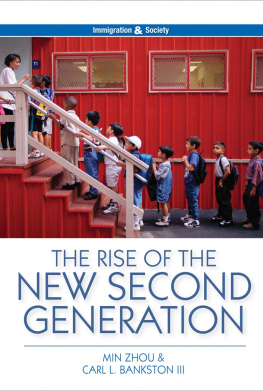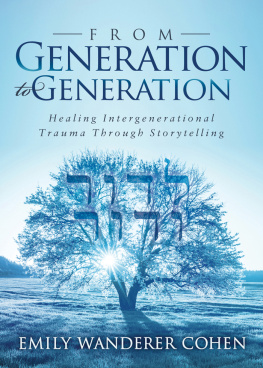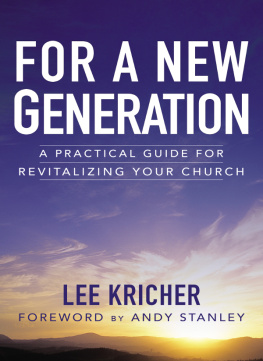First published in 1956 by
Routledge
Reprinted in 1998, 2001 by
Routledge
2 Park Square, Milton Park, Abingdon, Oxon, OX14 4RN
Transferred to Digital Printing 2007
Routledge is an imprint of the Taylor & Francis Group
1956 S. N. Eisenstadt
All rights reserved. No part of this book may be reprinted or reproduced or utilized in any form or by any electronic, mechanical, or other means, now known or hereafter invented, including photocopying and recording, or in any information storage or retrieval system, without permission in writing from the publishers.
The publishers have made every effort to contact authors/copyright holders of the works reprinted in The International Library of Sociology. This has not been possible in every case, however, and we would welcome correspondence from those individuals/companies we have been unable to trace.
British Library Cataloguing in Publication Data A CIP catalogue record for this book is available from the British Library
From Generation to Generation
ISBN 0-415-17650-6
The Sociology of Gender and the Family: 15 Volumes
ISBN 0-415-17827-4
The International Library of Sociology: 274 Volumes
ISBN 0-415-17838-X
Publisher's Note
The publisher has gone to great lengths to ensure the quality of this reprint but points out that some imperfections in the original may be apparent
Analytical Table of Contents
CHAPTER I.
Age Groups and Social Structure: The Problem
| The nature of age differences and age grading in the social structure |
| The basic preconditions of age grading; the exigencies of the process of socialization and of continuity of the social system |
| The importance of age grading for the development and social integration of the personality |
| Age grading and social maturation; initiation ceremonies |
| Allocation of roles and definition of boundaries of groups on the basis of age. Age-heterogeneous and age-homogeneous groups. The problem of the book: the place of age in the social structure and conditions under which age-homogeneous groups exist. |
| The nature of age-heterogeneous and age-homogeneous groups; the family as an age-heterogeneous group; family extension; kinship systems; the pattern variables regulating kinship relations; kinship systems and descent groups as age-heterogeneous groups |
| The basic hypothesis: the existence of age groups in societies not regulated by kinship or other particularistic criteria |
| Explanation of the hypothesis: the development of need-dispositions for interaction with age mates in nonparticularistic societies |
| Explanation of the hypothesis: the importance of role allocation on the basis of age homogeneity and establishment of age-homogeneous groups in nonparticularistic societies |
| The second basic hypothesis: age groups in authoritarian family and kinship groups |
| Summary: formal presentation of the hypothesis |
CHAPTER II.
Some Types of Age Groups
| Introduction |
| A. | Primitive Segmentary, Acephalous tribes |
| The Nuer |
| The Nandi |
| The Plains Indian Age Societies |
| B. | Conciliar (Acephalous) Primitive Villages: The Yako |
| C. | Primitive Centralized Chiefdoms and Monarchies: The Swazi, The Nupe, The Nyakyusa |
| D. | Peasant Villages: Age Groups among Irish Peasants |
| E. | Modern Societies |
| Informal and Semi-formal youth groups and youth culture |
| Israeli Youth Movements |
| The Free German Youth Movement |
| The Kibbutz |
| The Komsomol |
CHAPTER III.
Age Groups in Nonkinship (Universalistic) Societies
| Institutional criteria and derivations of universalistic (non-kinship) integrative principles |
| Age groups in non-kinship segmentary African tribes; comparative analysis |
| Age groups in decentralized African villages; comparative analysis |
| Age groups among the Plains Indians; comparative analysis |
| Age groups in primitive kingdoms (chiefdoms); comparative analysis |
| Age groups in the semi-feudal Kingdom of the Nupe |
| Age groups in Ancient Greece: Sparta and Athens; comparative analysis |
| General characteristics of primitive and historical age groups |
| The general conditions of emergence of age groups within modern societies |
| The basic social characteristics of the modern educational systems |
| The development of youth agencies and organizations and of the youth problem, in modern societies |
| The development of spontaneous youth groups and movements in modern societies |
| The historical development of modern youth groups and the emergence of youth groups in situations of culture contact and immigration |
| The distribution of youth groups among different sectors of modern societies |
| General characteristics of modern youth groups |
| Common characteristics of age groups; differentiation of main types; the problem of the next chapters |
CHAPTER IV.
Specialization and the Structure of Age Groups
| Meaning of specialization and achievement orientation; criteria of analysis |
| Specialization in segmentary primitive tribes |
| Specialization in primitive villages and centralized monarchies |












